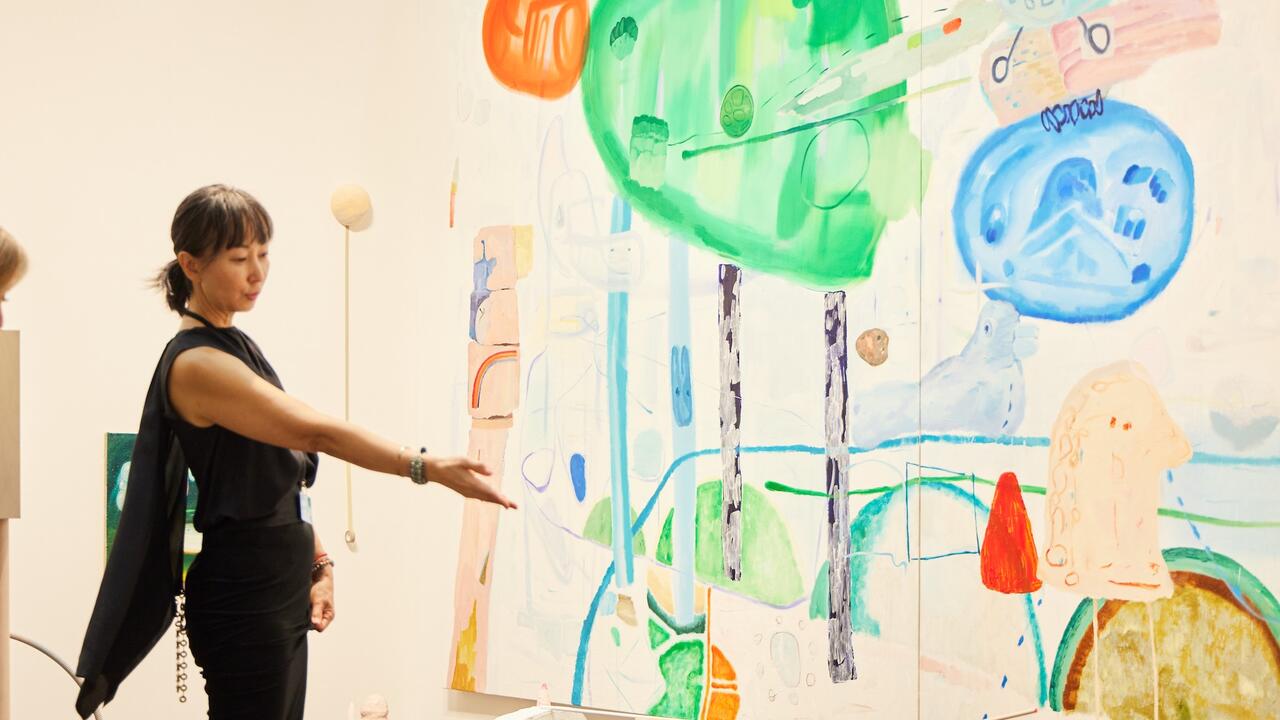The US Pavilion
Venice
Venice
History is a bitch. This thought hung over me as I walked through the installation of Felix Gonzalez-Torres’ work in the US Pavilion. That morning, while reading through press material on the show, I came across the sentence ‘He never wanted to be known as an AIDS artist’. As I walked through the exhibition, I digested the statement’s stupidity: who would want to be known as that? I considered the possibility that his selection for the Biennale implicitly confirms the wish of that statement – that we not look at his work in relation to its history. Our distance from the sense of urgency around the AIDS crisis during the 1990s is now the very thing that allows his work to be selected for Venice in 2007, as opposed to 1995 (when he was only short-listed), and the label ‘AIDS artist’ was unavoidable. Now that it’s history, we can forget its history.
Gonzalez-Torres’ work can be pointed, hard, as well as warm, even sentimental. Synchronized clocks side by side allegorize the kind of lovers who can finish each other’s sentences. His billboard of an empty bed has become an emblem for the generation lost to AIDS. Piles of candy that erode as spectators take some for themselves gesture towards his dying lover (who had a sweet tooth) and also towards the placebos used in testing by drug companies. Posters of people who have died by gunshot, or blank pages with a funereal border, wait to be taken away by the viewer – leaving one fewer for the next visitor. Gonzalez-Torres knits content into form so tightly as to make that content almost disappear.
Curator Nancy Spector exhibited some of this work for the US Pavilion under the flat title ‘America’ (also the name of the light sculpture that greets you as you enter the building). The installation centred on the artist’s investigations of the problem of nationality – his photographs of the language used to memorialize Theodore Roosevelt in a national monument: a string of lights parenthetically titled after Walt Whitman’s Leaves of Grass (1855).
On the rainy morning of my visit the rooms seemed not just empty but dead: the piles of posters were gone (waiting to be replenished). I felt ‘too late’, beaten by a flock of vultures. Of course, this is the work’s point. More troubling was Spector’s actualization of sketches the artist made for two reflecting pools. Here realized as enormous concave Carrara marble disks dominating the front courtyard of the pavilion, the exhumation of this unrealized idea is a clunky failure to bring him back from the grave.
This funereal tone resonated with another American contribution to the Biennale. Edgar Heap of Birds represented ‘First Nations’ artists via the Smithsonian Museum of the American Indian. His public art project Most Serene Republics (2007) installed posters and signs throughout the city. A large banner loomed over passport control at Venice’s Marco Polo airport, ‘promoting’ the Biennale as a Wild West Show (in English, Italian and Cheyenne). Its mimicry of the language of advertising and the spectacle camouflaged a deep ambivalence about being invited to participate. The work gestured simultaneously to the plundering that gave Venice its wealth and the demand for encounters with cultural authenticity as a form of entertainment. Our passports are stamped, and we shuffle out to queue up for exotic encounters with History and Others. His posters in the city ask us to remember the ‘Show Indians’ who died while touring Europe in the 19th century, to consider that Venice invented the ghetto and that its beauty is stolen.
We might triangulate these two artists with Manuela Ribadeneira’s work Hago mío este territorio (I claim this territory as mine, 2007). This piece was exhibited off-site, as a part of the Latin American ‘Territorios’. A pen-knife stabbed high into the gallery wall is inscribed with the sentence that forms the work’s title. A light shines down from the ceiling, and the inscription (unreadable on the surface of the metal blade) is cast as a shadow on the wall, claiming that as the artist’s territory. It is a canny statement – history may be my topic, it says, but this tiny space here is my territory.
















